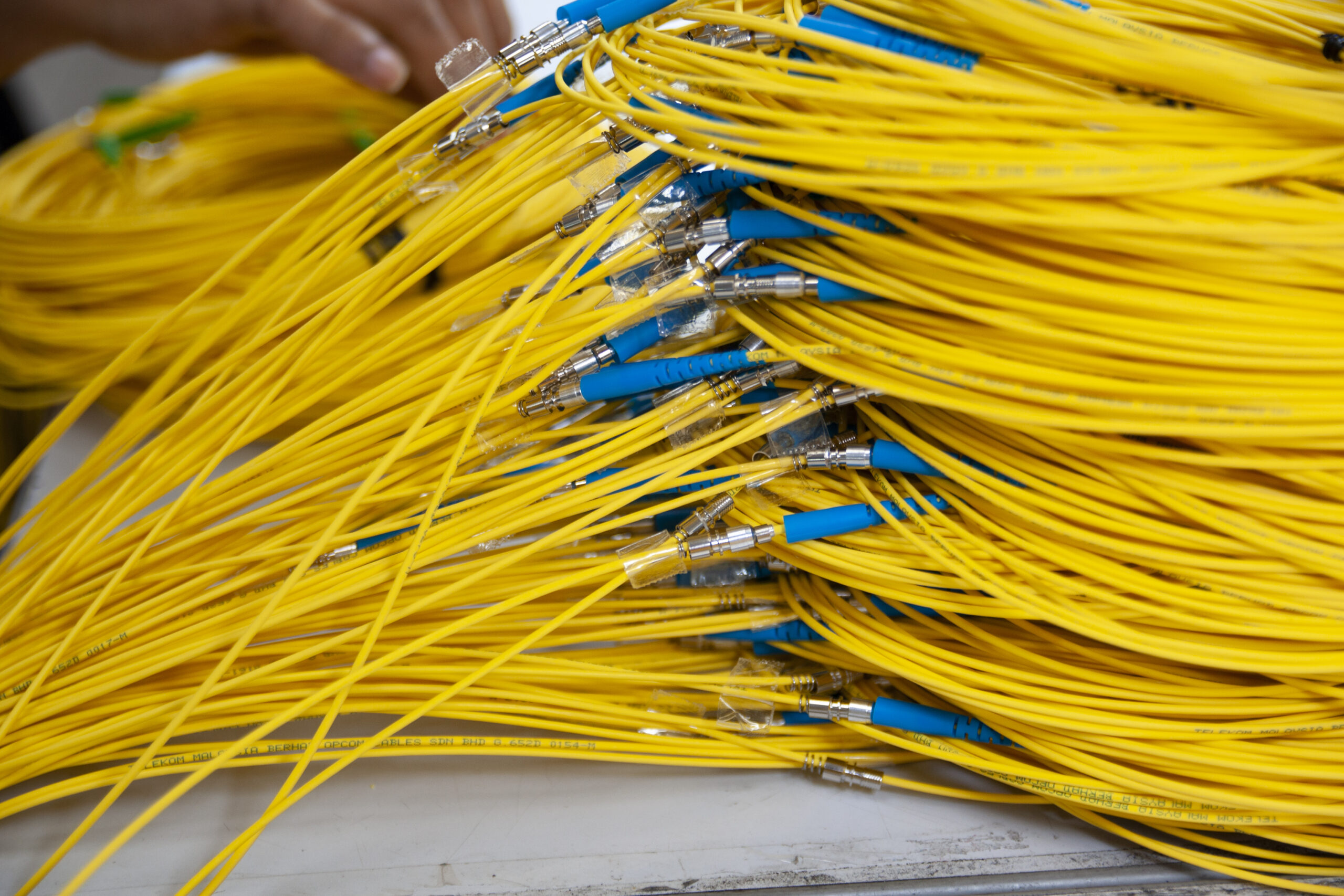
What's Covered On This Page
What Is Fiber Optic Internet?
Fiber optic internet, often simply referred to as “fiber,” is a type of broadband connection that can offer high-speed internet. Unlike traditional copper wires used for broadband connections, fiber optic technology uses thin strands of glass or plastic fibers to transmit data. These fibers carry binary transmissions in the form of light pulses, which allows for incredibly fast data transfer rates.
The beauty of fiber optic internet lies in its speed and efficiency. It can transmit data over long distances without losing much signal strength, a common problem with copper wires. This technology can send data at about 70% the speed of light, and can reach speeds of up to 10 Gigabits per second (Gbps) in some areas. This makes fiber optic internet a powerful tool for high-bandwidth activities like streaming high-definition video, playing online games, and more. It’s a leap forward in internet technology, bringing us closer to a future of seamless, high-speed connectivity.
While fiber optic internet is powerful, it does come with its own set of drawbacks. One of the main disadvantages is its limited availability. Fiber optic internet requires a significant infrastructure, which is not yet available in all areas. Additionally, the installation costs for fiber optic internet can be higher compared to other types of internet. The fiber cables themselves are inherently fragile, making them more vulnerable to damage and errors, which can compromise signal speed. These cables require special tools and training to handle, making them more difficult to repair than traditional copper ones. And finally, fiber optic internet is dependent on power sources for operation, which could pose potential compatibility issues with some devices or systems.
What Are Fiber Optics?

Fiber optics are thin, flexible strands made of glass or plastic that transmit data in the form of light pulses. These strands, often as thin as a human hair, are bundled together to form a cable. Each individual fiber is coated with a layer of cladding, a material that reflects light back into the core and prevents it from escaping, allowing the light to travel great distances.
A typical glass optical fiber has a diameter of 125 micrometers (μm), or 0.125 mm (0.005 inch). This is actually the diameter of the cladding, or outer reflecting layer. The core, or inner transmitting cylinder, may have a diameter as small as 10 μm. Despite their delicate appearance, these fibers are incredibly durable and can transmit data over long distances with minimal loss.
How Does Fiber Optic Internet Work?
Imagine you’re in a really long hallway and you want to send a message to your friend at the other end. You could walk all the way there, but that would take a while. Instead, you decide to use a flashlight to send your message in Morse code. The light from your flashlight travels super fast down the hallway to your friend, much faster than you could walk. This is similar to how fiber optic internet works.
Fiber optic cables are like that long hallway, but instead of air, they’re filled with thin strands of glass or plastic. These strands carry pulses of light, just like your flashlight, to transmit data. The light pulses represent binary code, the language of computers, where the presence of light might indicate a binary one and the absence of light would indicate a binary zero.
But here’s the cool part: these light pulses can travel at about 70% the speed of light. That’s over 200,000 kilometers per second! So, your message doesn’t just get to the other end of the hallway quickly, it gets to the other side of the world quickly.

